In an intro electronics class in high schools, we use 6v battery packs as a way of delivering safe power for experimenting. However, the logistics of constantly getting fresh batteries, and our distaste for using so many batteries is leading to a search for an alternative.
We would like an inexpensive power supply that delivers small amounts of current (Ideally both 5V @ .2A, 12V @ .2A for example). Building such a supply as a project would be possible for a class of the more advanced students. So the question is to find a design. However, it would have to be protected from short circuits, and ideally would indicate to the student (with an LED?) when they have made a mistake and short circuited.
I found one design for a DC circuit, though this one requires DC voltage in:

Obviously I could take the above design, add a transformer and full-wave rectifier, but that's both big and clunky as well as possibly not optimal.
In an earlier question, someone suggested a 5V wall wart. student safe power supplyI can find inexpensive 5V wall warts, but would ideally like 12V as well, and have no idea if a given wall wart is short-circuit protected and even if they are, I want an indicator SHOWING when there is a short-circuit. I would like to take one and build in short circuit protection with an LED or alarm showing when a short happens, as well as a power indicator showing when it is on.
Can anyone suggest a design that we can build or buy? Since we are talking dozens of units per class, the cost has to be kept low.

